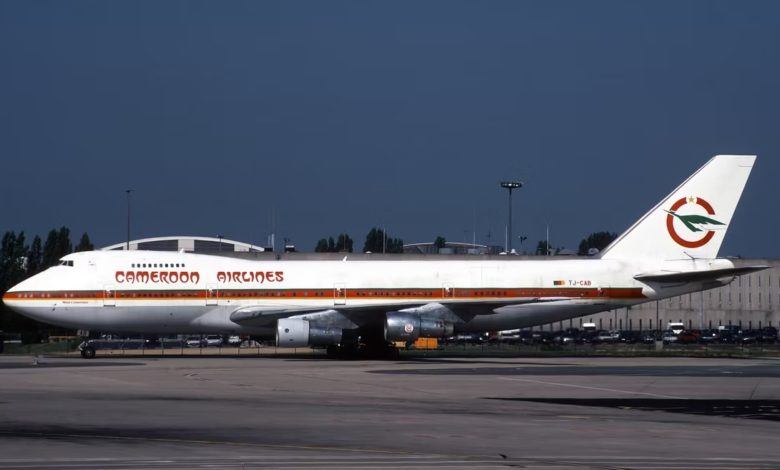Cameroonians desperately need a properly functioning domestic airline. But first, some suggestions…

By Hans Ngala
It’s been nearly 15 years since Cameroon Airlines stopped existing back in 2008. When it was created in the early 1970s, Cameroon Airlines with its large Boeing aircrafts was the pride of Cameroonians everywhere. From its signature logo to its name – Cameroon Airlines, the airline bore a level of prestige that few African airlines at the time had.
The carrier was created in response to an acute shortage of African-owned and African-run airlines. At the time, most West African countries relied on the pan-African Air Afrique for their aviation needs, but this soon proved insufficient. Air Afrique for its part had begun a steady decline in the 1980s, but still managed to hold out until the early 2000s. The airline was marred by mismanagement and corruption and the September 11, 2001 attacks in the US led to a worldwide aviation industry crisis that led to the liquidation of Air Afrique in 2002.
Cameroon Airlines for its part had a steady take-off – literally. Flights between Yaounde and Douala commenced on November 1st, 1973, and international flights to Rome and Paris began shortly thereafter. Boeing aircrafts were mainly used by the airline and things seemed to be going quite well until they took a nosedive – figuratively and literally.
Chequered Safety Record
Cameroon Airlines was doing well for the first few decades after its creation, but mismanagement and a poor safety record meant that the airline took a nosedive. In 2004, British authorities banned Cameroon Airlines planes from Gatwick Airport and the following year, the French Civil Aviation authority banned Cameroon Airlines from French airspace due to the company’s poor safety record.
This was for valid safety reasons as a lot of incidents had occurred starting in the 1980s. On the 31st of October 1981, an overloaded Cameroon Airlines plane failed to take off from Bafoussam airport, killing 1 passenger. There had been 22 passengers on board with 2 pilots.
On the 30th of August 1984 while taxiing the runway at Douala International Airport in preparation for take-off for Yaounde, a Cameroon Airlines plane suffered an engine explosion that killed 2 passengers out of 107.
And on the 3rd of December 1995, another Cameroon Airlines plane crashed upon attempting to land at Douala International Airport. The incident killed 71 out of the 76 people on board and was the worst accident in Cameroon Airline’s history.
The Airline failed to secure funding from Brussels Airlines and the number of flights had been dwindling up to this point already. The failure to secure funding from Brussels Airlines meant that the Airline was effectively liquidated in March of 2008.
What Hope for Cameroon’s Aviation Industry?
After the closure of Cameroon Airlines in 2008, it took until 2011 for the Cameroon Airlines Corporation (Camair-Co) to be created. Camair-co has not been doing too differently from its predecessor Cameroon Airlines as would have been expected. With less than 10 aircraft, the company has reportedly “been struggling” ever since its creation and some sources even claim that it has not been able to make a profit.
While the state of Cameroon is the lone shareholder, it may be time for authorities to consider having more shareholders and partnering with more successful airlines. Also, restructuring the airline to focus first on domestic flights may be a better idea. If domestic flights can be prioritized and with quality services, the airline may actually witness growth and can then consider flying to other destinations on the continent.
Flights between Yaounde and Douala cost 43, 000CFA according to information on the Camair-co website. The Anglophone Crisis in Bamenda has meant that the airline stopped flights to Bamenda which reportedly cost about 50,000 CFA in 2017. A visit to the Camair-co website by this reporter revealed that flight tickets from Douala to Bafoussam are selling for just 21,000CFA and the flight duration is 45 minutes.
But why are few Cameroonians using the airline? It would appear that because of its poor safety record, even Cameroonians do not trust their own airline. Some have referred to the company’s planes as “flying coffins” on some social media platforms.
This means that Cameroonian aviation authorities have a lot of work to do to build trust in Cameroonians so they can fly with the country’s national carrier. The company needs to step up its safety procedures and stamp out corruption so as to grow profitably. Doing this could mean an increase in ticket prices, but this would be worth it as it is better to spend 45 minutes on a flight to Bafoussam than to take 7 or 8 hours by bus to the same destination.
More Cameroonian investors as well as foreign investors should be encouraged to create new domestic airlines in order for there to be competition which would ultimately lead to an augmentation in the quality of aviation services in Cameroon.
In the 21st century, it is sad that Cameroonians still live as if they are in the 1960s because of poor transportation services. Flying should not be a death trap for anyone because in this day and age, it is possible for Cameroonians to fly to various parts of their country safely. With poor road networks, this makes flying even more mandatory and safer but Cameroonian aviation authorities have to convince Cameroonians that it is safe to fly with Cameroonian domestic airlines in the first place.




